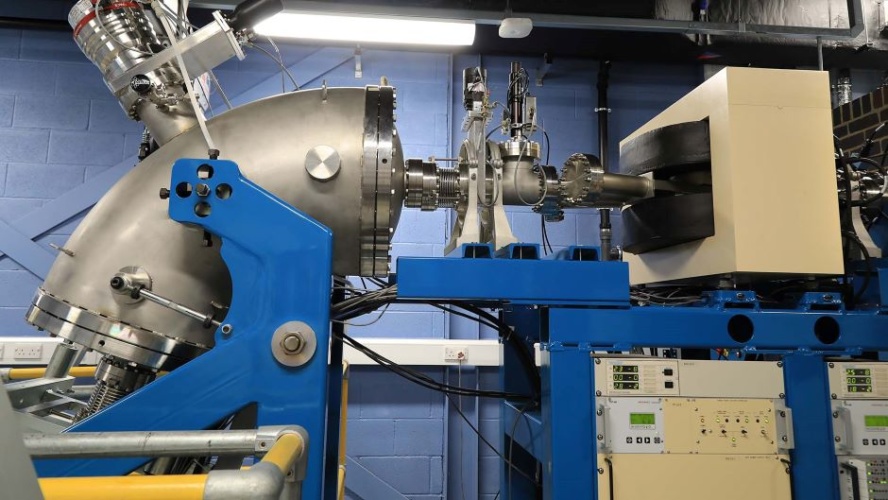
This is the conclusion of research made possible at Huddersfield University’s MIAMI-2 – Microscopes and Ion Accelerators for Materials Investigations – facility.
Alloys help aluminium become harder via precipitation strengthening, but the radiation encountered in space can dissolve the hardening precipitates with potentially disastrous consequences.
Mars 2020 mission gears up for a red planet return
US team develops rust-based radiation shielding technique
Research carried out at MIAMI-2 in partnership with Montanuniversitaet Leoben (MUL), Austria, found that a particular hardening precipitate of a new aluminium alloy – developed by metallurgists led by Professor Stefan Pogatscher (MUL) – does not dissolve when bombarded with particle radiation when compared with existing data on irradiation of conventional aluminium alloys.
The result is an alloy with a radiation-resistant hardening phase called a T-phase, which has a complex crystal structure of Mg32(Zn,Al)49. The research led to a paper that has been published in Advanced Science.
“The idea of the paper was testing these new alloys using the MIAMI facilities, because we can subject the alloy to energetic particle radiation and, at the same time, monitor the effect of this radiation on the alloy microstructure with a transmission electron microscope”, said MUL’s Dr Matheus Tunes, who finished his PhD in Huddersfield.
“We monitored the crystallographic signal of the T-phase as the radiation increased and observed that compared with other conventional aluminium alloys, the alloy we developed was radiation tolerant.
“It sheds light on a very exciting new field of research we call ‘prototypic space materials for stellar-radiation environments’. A nuclear reactor is also an extreme environment, as is the sun with solar cycles, but dynamic instabilities on the sun such as solar flares and coronal mass ejections are more extreme than anything on Earth. The sun is a very efficient nuclear fusion reactor and high-energy particle accelerator.”.
With manned missions to the moon and Mars currently being planned, the advantages of spacecraft that are light enough to launch and withstand radiation to protect their crews are clear. Next steps for the research are to find out why the alloy behaves the way it does and what further benefits there could be.
“We discovered the T-phase is radiation-tolerant, but we haven’t discovered why that is,” said Dr Tunes. “We have an idea which involves the chemical complexity of the phase that we believe could lead to some very interesting research. We hope that we can make an important contribution to further human exploration of space.”

Red Bull makes hydrogen fuel cell play with AVL
Formula 1 is an anachronistic anomaly where its only cutting edge is in engine development. The rules prohibit any real innovation and there would be...